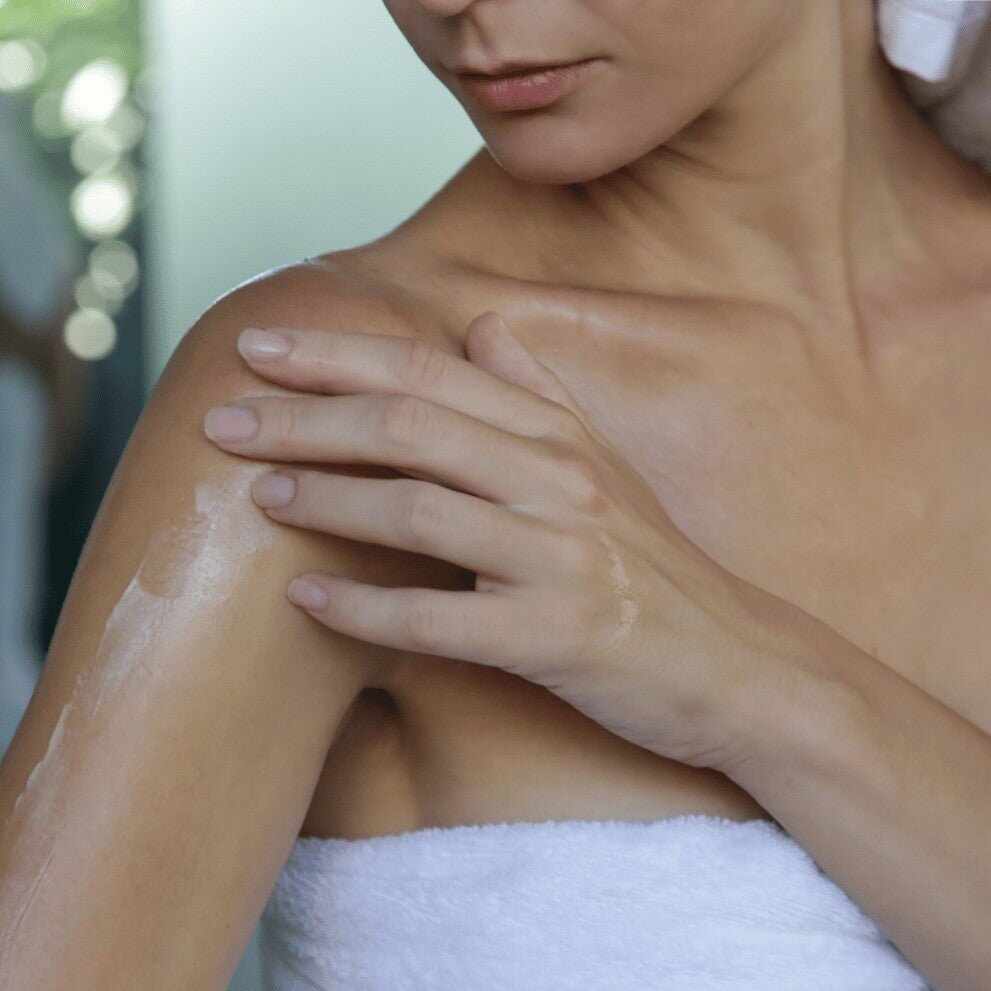Atopic Dermatitis is a fairly common skin disease : skin that becomes very dry and irritable .
It affects adults, children and infants.
It affects 10% of the global population - between 10-20% of children and 2-5% of adults - and the highest concentration of affected people is found in the Western world.
This inflammatory skin condition is increasing exponentially : in the last 30 years, cases have increased by 200-300%.
What is Atopic Dermatitis?
Atopic Dermatitis, or Atopic Eczema, is a chronic, non-contagious skin disease that manifests itself with constantly dry, itchy and irritated skin on the face and/or body.
We find dry, scaly patches on the scalp, forehead, around the eyes, and behind the ears. Rashes are also very common on the cheeks, especially in newborns.
Infants and young children are most affected, with approximately 90% of patients having symptoms before the age of five years and 80% before the age of two years.
However, symptoms can vary from person to person, even from season to season and even from day to day.
The condition of Atopic Dermatitis has two phases:
- the active phase or acute phase in which a skin rash appears. In this phase, itching appears and the skin is inflamed with evident redness, it is swollen, painful, scaly and with small hemorrhages.
- the inactive or remission phase during which the skin may be dry or very dry, slightly chapped, irritable.
During the inactive phases it is essential to adequately protect the skin to prolong the periods between one acute phase and the next.
Triggers of Atopic Dermatitis
Triggers and not causes, because a real cause for Atopic Dermatitis has not been found nor a definitive cure.
Knowing and avoiding triggers, following an intensive as well as daily treatment can prolong the phases in which the disease is not present while following specific treatments for the acute phases can help the skin to free itself of the symptoms.
There are a number of theories for the triggers and development of Atopic Dermatitis:
- Atopic dermatitis is closely related to asthma and hay fever.
- If both parents have atopic dermatitis , their children also have a 60 - 80% chance of inheriting the disease from their parents.
- Women are more likely than men to develop Atopic Dermatitis
- Living in an area with a particularly cold climate appears to increase the risk of developing atopic dermatitis.
- Cities with a lot of smog : Living in an area with high levels of pollution increases the risk of developing atopic dermatitis.
In addition, we find four pathogenic factors of Atopic Dermatitis:
- Hereditary Filaggrin Deficiency , a deficiency of natural moisturizing factors (NMFs), such as amino acids.
- Disturbance in the metabolism of epidermal lipids (ceramides, cholesterol and free fatty acids) and altered formation of the skin lipid barrier. Without that protection it is easy for infectious agents to penetrate the epidermis
- Attack by bacteria (Staphylococcus Aureus) and secretion of superantigens.
- Environmental influences such as irritants, allergens and pollution.
The Atopic Cycle is then triggered
- A damaged barrier causes dehydrated and damaged skin.
- This leads to inflammation and itching.
- We scratch and damage the skin barrier, promoting the formation of an environment suitable for bacteria.
Additional contributing factors
Some other factors can aggravate existing symptoms:- Foods (especially dairy products, nuts, shellfish and alcohol)
- Allergens such as dust mites, pollen
- Formaldehyde
- Aggressive detergents
- Stress
- Insomnia
- Sweating
- Cigarette smoke
Remedies for the symptoms of Atopic Dermatitis
Although there is no cure for Atopic Dermatitis, symptoms can be kept under control with careful and consistent management.
Emollients are the key to skin health, everyone’s skin .
We know how important it is to take care. We must use them every day. Even more so on skin affected by atopic dermatitis.
The role of emollients is to prevent the onset of flare-ups of Atopic Dermatitis. Emollients include lotions, face creams, ointments, and cleansers. Good skin hydration helps prevent itching and reduce the frequency of flare-ups.
Some extra tips to relieve the symptoms of atopic dermatitis:
- We avoid sweating as much as possible, always looking for a cool environment, especially during the night;
- Write down in a diary what you do and your symptoms of the day, to understand what influences the well-being of your skin;
- When possible, take your holidays in places with a beneficial climate such as the sea and the high mountains;
- Choose clothes made of natural fibres;
- When itching occurs, rub lightly without scratching hard;
- After showering, pat your skin dry with a soft towel without rubbing;
- Always use super delicate and soft sponges;
- From a holistic point of view try to avoid stress, relax. Take a meditation, yoga, mindfulness course. and give yourself breaks just for you.
Sea sponges are great for stressed skin because they are so delicate and soft. Learn all about sea sponges in our guide!
Want to continue discovering our tips? Continue reading in the body section of our blog!
[ApSC sc_key=sc3148331291][/ApSC]








